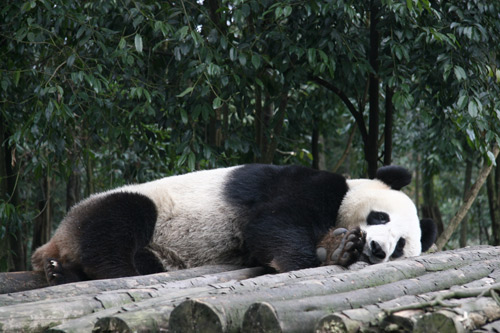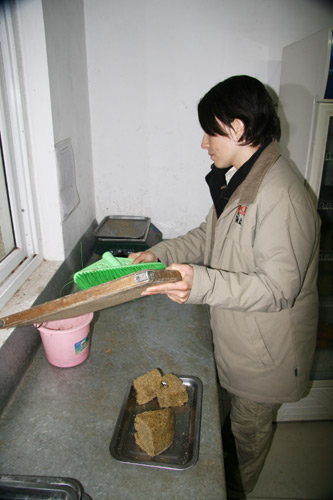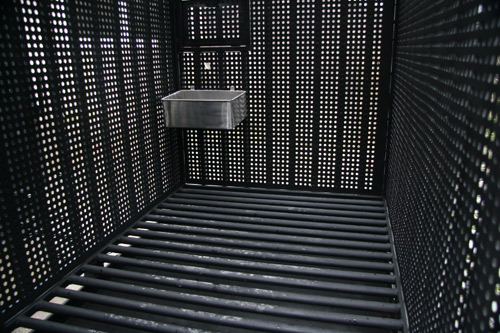
Wang Wang naps after lunch. The four-year-old male panda is due to arrive in Adelaide, Australia on Saturday. [Photo: CRIENGLISH.com]
A giant panda couple will leave their southwest China home Friday for a 10-year stay in Australia, the first of the endangered species to live in the southern hemisphere.
Four-year-old Wang Wang and 3-year-old Fu Ni left the China Giant Panda Protection and Research Center in Ya'an, Sichuan Province, at 10:15 a.m, for a three-hour journey to the provincial capital, Chengdu.
They will catch an afternoon flight to Australia.
Wang Wang, meaning "the web", and Fu Ni, meaning "happy girl", will stay at Adelaide Zoo.
They would need about a month to fully adapt to the new environment and were likely to produce offspring in two years, said Zhang Hemin, China's top giant panda specialist who's known as the "father" of pandas.
Huang Yan, a panda researcher at Ya'an center, said Fu Ni would enter full sexual maturity in 2012, when Wang Wang would also be in the reproductive period.
At a brief farewell ceremony at the Ya'an center Friday, Dr. Wayne Roardman, of Adelaide Zoo, said he hoped the pandas would enjoy life in Australia and have cubs soon.
China and Australia agreed to conduct joint research on giant pandas in 2007. The research program focuses on the breeding, reproduction and behavioral study of the rare species.
"The departure of Wang Wang and Fu Ni marks a formal beginning of such cooperation," said Zhong Yi, an official in charge of international cooperation at China Wildlife Conservation Association.
"They will bring laughter to Australians, and will cement the friendship between the Chinese and Australian peoples."

Funi eats a "Panda Cake", which is made of flour, sugar, bamboo fiber and various kinds of nutrients, on a slope in her territory. The three-year-old female panda will have a new home in the city of Adelaide, Australia. [Photo: CRIENGLISH.com]

Simone Bayly makes "Panda Cakes". The senior animal keeper from Zoos South Australia has been learning how to take care of pandas for two weeks at the China Conservation and Research Centre for the Giant Panda in Ya'an, southwestern China's Sichuan province. [Photo: CRIENGLISH.com]

Two specially made steel cages are to be used in transferring the pair to Australia by air. [Photo: CRIENGLISH.com]

Posters hang along the entrance into the China Conservation and Research Centre for the Giant Panda in Ya'an, Sichuan province, reminding people that Wang Wang and Funi are soon to leave for the southern hemisphere. [Photo: CRIENGLISH.com]
